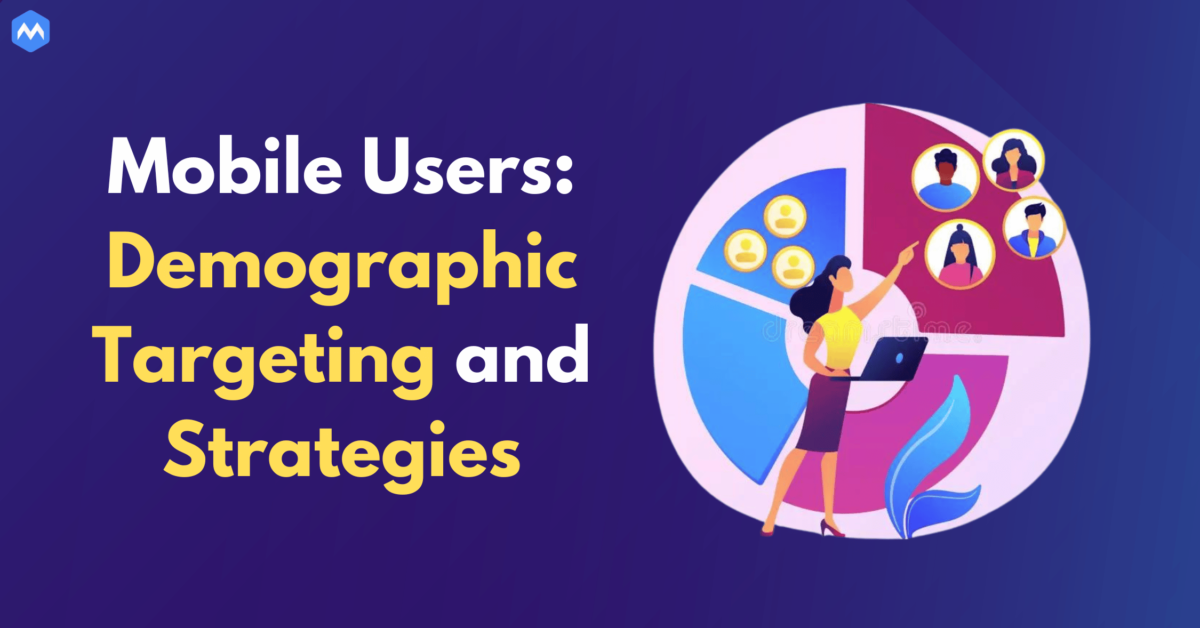Targeting Mobile Users: Demographics and Strategies
Introduction:
In an era dominated by the palm-sized powerhouses we call smartphones, reaching your target audience requires precision and finesse. Mobile devices have become an integral part of our daily lives, presenting an unparalleled opportunity for advertisers to connect with their audience. This article explores the art and science of demographic targeting, delving into strategies employed by advertisers to captivate the vast and diverse mobile user base, particularly in India.
What is Demographic Targeting?
Demographic targeting is a marketing strategy that involves tailoring advertisements to specific demographic groups. In the context of mobile users, this approach focuses on understanding the unique characteristics and behaviors of individuals to deliver content that resonates with them. By leveraging demographic data, advertisers can refine their messages, ensuring they speak directly to the interests and preferences of their intended audience.
Understanding the Mobile User Landscape in India:
In the vibrant tapestry of India, mobile phones have become an indispensable part of daily life. Understanding the diverse demographics of mobile users in this vast country is the first step in crafting effective marketing strategies. From bustling metropolises to remote rural areas, the mobile phone transcends socio-economic boundaries, making it a powerful channel to connect with the masses.
The targeting mobile users in India goes beyond urban centers, encompassing every nook and cranny of the nation. Advertisers keen on tapping into the diverse target audience for mobile phones must recognize that the influence of these devices extends seamlessly from bustling metropolises to the far reaches of remote rural areas. The power of demographic targeting lies in its ability to bridge socio-economic boundaries, allowing marketers to weave a narrative that resonates with the varied lifestyles and preferences of the Indian populace.
Strategies Employed by Advertisers to Target Mobile Device Users:
In the fast-paced world of mobile advertising, precision is key. Advertisers employ a plethora of strategies to ensure their message reaches the right eyes at the right time. From social media platforms to mobile apps, the avenues are vast. One such strategy involves leveraging data analytics to gain insights into user behavior. This allows advertisers to fine-tune their campaigns, ensuring they are not just seen but also engaged with by their target audience.
In the ever-evolving landscape of mobile advertising, advertisers deploy a myriad of strategies honed to perfection. The quest for precision in reaching the right audience at the right moment is an ongoing pursuit, and the use of data analytics is a cornerstone in achieving this goal.
• Data-Driven Insights:
Advertisers delve into the treasure trove of data, leveraging analytics to decipher user behavior patterns. This process allows them to discern preferences, habits, and even the locations frequented by their target demographic. Armed with these insights, advertisers can craft campaigns that not only align with user interests but also anticipate their needs.
• Geo-Targeting Excellence:
In the realm of Demographic Targeting, geo-targeting stands out as a potent strategy. Advertisers capitalize on location data to customize their messages based on the geographical location of users. This localized approach ensures that promotions offers, and even content resonate with the specific cultural nuances and preferences of the targeted audience in different regions.
• Contextual Relevance on Social Media:
Social media platforms have become bustling marketplaces, and advertisers keen on Demographic Targeting exploit these spaces with finesse. By understanding the context in which users engage with platforms like Facebook, Instagram, and Twitter, advertisers can tailor their content to seamlessly integrate with the user’s social experience. This not only enhances visibility but also establishes a more authentic connection with the audience.
• Personalized Ad Campaigns:
The era of one-size-fits-all advertising is long gone. Advertisers now embrace the power of personalization. Through Demographic Targeting, they craft ad campaigns that speak directly to specific age groups, genders, and interests. Personalization goes beyond mere customization – it’s about creating an individualized experience for each user, making them feel seen and understood.
• Dynamic Retargeting Strategies:
Advertisers understand that a single touchpoint might not be enough to seal the deal. Enter dynamic retargeting, a strategy that involves re-engaging users who have interacted with a brand but have not yet converted. By tailoring follow-up ads based on the user’s previous interactions, advertisers maximize the chances of conversion, turning fleeting interest into lasting brand loyalty.
• Mobile App Optimization:
With the proliferation of mobile apps, advertisers focus on optimizing their campaigns for this specific medium. From in-app advertisements to tailored promotions within mobile applications, advertisers ensure that their strategies align seamlessly with the user experience. This approach not only enhances visibility but also fosters a more immersive and integrated brand experience.
And this is how advertisers target mobile device users. In this intricate dance, demographic targeting emerges as the guiding light. By combining these diverse strategies, advertisers create a symphony of relevance and resonance, ensuring that their message not only reaches but deeply resonates with the dynamic and diverse audience navigating the mobile landscape.
Advantages of Demographic Targeting:
Demographic targeting in marketing offers a range of advantages that can significantly enhance the effectiveness of campaigns. Let’s delve into five to six key benefits of leveraging demographic targeting strategies:
• Precise Audience Reach:
One of the primary advantages of demographic targeting is the ability to reach a highly specific audience. By tailoring marketing messages to individuals based on their age, gender, income, education, and other demographic factors, advertisers can ensure that their content resonates with the right people. This precision helps eliminate wasted impressions on users who are unlikely to be interested in the product or service.
• Cost Efficiency:
Demographic targeting can lead to more efficient allocation of advertising budgets. When marketers focus on specific demographic segments, they can optimize their spending by avoiding broad, untargeted campaigns. This targeted approach ensures that resources are used wisely, maximizing the impact of each advertising dollar.
• Increased Relevance and Engagement:
Tailoring content to specific demographics enhances the relevance of marketing messages. When users encounter ads that align with their interests, needs, and preferences, they are more likely to engage with the content. This increased relevance can lead to higher click-through rates, improved conversion rates, and overall enhanced engagement with the brand.
• Better Understanding of Customer Behavior:
Demographic targeting provides valuable insights into customer behavior. Analyzing the responses and interactions of different demographic groups allows marketers to refine their strategies continually. By understanding how specific demographics engage with content, marketers can adapt their approaches to better meet the evolving needs and expectations of their audience.
• Personalization Opportunities:
Personalization is a key driver of successful marketing campaigns, and demographic targeting facilitates a higher level of personalization. Marketers can customize content, offers, and promotions based on the characteristics of the target audience. This personalized approach helps build a stronger emotional connection between the brand and its customers, fostering loyalty and brand advocacy.
• Efficient Product Development and Innovation:
Understanding the demographics of a target audience goes beyond marketing; it can also inform product development and innovation. By gaining insights into the preferences and needs of different demographic segments, companies can create products and services that better align with the desires of their customer base. This proactive approach to product development enhances the chances of success in the market.
Unveiling the Meaning Behind Targeting Mobile Users:
Targeting mobile users goes beyond simply displaying ads on their screens; it’s about creating meaningful interactions. It involves presenting content that is not only relevant but also timely and engaging. The meaning behind targeting mobile users lies in establishing a two-way communication channel, where users feel a connection with the brand rather than being bombarded with generic messages.
In the Indian market, where the smartphone is often the primary gateway to the digital world, advertisers need to be mindful of cultural sensitivities and values. Crafting messages that align with the local ethos enhances the effectiveness of mobile advertising campaigns. Targeting mobile user meaning becomes clearer when advertisers understand that it’s more than just displaying ads on screens; it’s about creating meaningful interactions. The target audience for mobile phones demands content that not only aligns with their interests but also reaches them at the right moment, enhancing the overall user experience.
The Impact and Future of Demographic Targeting:
As we navigate the currents of the digital age, demographic targeting emerges not just as a strategy but as a necessity. The impact is profound, as businesses witness higher conversion rates, increased brand loyalty, and a more significant return on investment. Looking ahead, the future of targeting holds even more promise, with advancements in artificial intelligence and machine learning poised to refine the precision of targeting, making campaigns more efficient and impactful than ever before.
Conclusion:-
In the grand theater of mobile marketing, demographic targeting takes center stage, weaving a narrative that speaks directly to the hearts of mobile users. As advertisers continue to refine their strategies, understanding the diverse demographics and employing innovative techniques like those championed by Metaloop Marketing becomes paramount. The journey to captivate the mobile audience is ongoing, but armed with the insights and strategies unveiled here, businesses can navigate this realm with confidence, ensuring that their message not only reaches but resonates with the diverse tapestry of mobile users in India.



Write a Comment